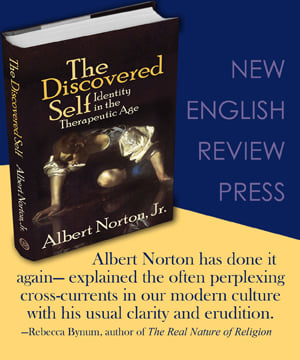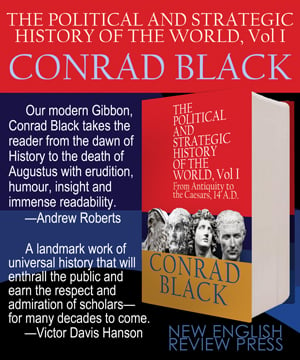by Geoffrey Clarfield (February 2025)
I was in my early twenties. I was a “world music” student at a young university in Canada. We had the opportunity to study both musicology, ethnomusicology, and performance in one of the high traditions of Asia. I chose the sitar and had the privilege of spending a semester of back breaking toil under the kind supervision of Beatle George Harrison’s sitar tutor, Shambhu Das.
I also took a full semester course on the classical music of India with a Yankee Jazz singer who had gone to southern India and had become a master singer of that classical Carnatic repertoire. Jon Higgins was his name. In his class we listened to hundreds of hours of the best singers and instrumentalists that northern and southern India had to offer on vinyl and, we learned to understand the snakes and ladders like structure of raga and tala (mode and rhythm).
Not content with my sitar lessons or the music I heard in class I began to buy records of Indian music and take them home. I would listen to them, sometimes for scores of hours at a time as I read, prepared for exams, and typed up my term papers.
I was not alone and one of my fellow students who had married a South Indian immigrant insurance agent would have us over to their place for Indian feasts. She and her husband would place an enormous sheet on the floor of the living room and serve us up Indian delights as we the assembled sat on the floor and ate with our right hands.
Then friends and I started going to the numerous Indian restaurants that were sprouting up all over the Greater Toronto Area as Toronto became home to thousands of immigrants from the sub-continent during the seventies, eighties, and nineties and which has not yet abated. These are mostly hardworking, law abiding and sometimes very well-heeled people.
Then in my thirties, I discovered Yoga. I had been a sidewalk jogger during my twenties and then one day, my knee gave way, part of my meniscus had to be taken out and I gave up jogging and took up Yoga. Gratitude to the Yogis of the Himalayas who invented this healing regimen. Gratitude to BKS Iyengar and his Canadian students who brought this tradition to the studios of Toronto.
Of all the albums of Indian classical music that came my way there is still one that captures my imagination as it did on first hearing. It is a series of recordings made by John Levy when he was in India fifty years ago. When I listen to it, I enter another world, the world of India. And it is as if I am suddenly transferred to the open tent of a Raja of Rajasthan. He gives me a magic carpet and with it I can go anywhere I want.
Bansri
When I listen to this piece on the Bansri flute music I take flight. I am on my magic carpet, and I direct it north to the highest Himalayas. Years later, when working in rural Nepal, I would fly across them. (“Ladies and Gentlemen, Captain Sharma would like to direct your gaze out of the right-hand side of the passenger cabin. In a minute you will see Mount Everest before you. Hindus call it Sagarmatha. We believe it is inhabited by the Gods as did your European ancestors when they believed that their Gods lived on Mount Olympus).”
In Kathmandu, when the air is clear and you are in a tall building you can see the Himalayas, many miles away and when you are in the city on foot all of sudden you turn a corner and there they are, framed between two buildings, larger and whiter than anything you ever imagined or saw in a film. It is as if you could reach out your hand, grab a handful of snow and playfully then throw it across the street while you yelled to the startled man at the kiosk. You would smile and say, “Do you know where this comes from?”
Sarangi
I hear the plaintive sound of the sarangi a stringed “fiddle” supported by sympathetic strings and played by a bearded man with a green turban. He is accompanied by a young man playing the twin drums or tabla. There is an incredibly well-dressed woman in her forties with a Sari that is impeccably folded, sitting near the musicians.
My carpet stands stock still on the second floor of her private compound called a Haveli. Here this courtesan lives without a husband but with her children and the female relatives who trained her to be poet, singer, and educated companion for selected male visitors. One of them is sitting across from her, enchanted, hypnotized and waiting for her to begin singing. They cannot see me for the carpet and its master have made me invisible.
After three hours of divine singing, polite chatting and word play the singer gets up as does her visitor. With a nod of her head he is directed into the hallway. I know that they will walk down the hallway and enter her chambers. The man will leave in the morning, and he will return many times.
Such was the life of the upper classes of northern India until the puritan side of the British conquerors declared these courtesans to be immoral and evil. If you go to the great cities of northern India, you can no longer find them. But many of the sons of the musicians who performed for them play the circuit of classical music in India and some, have well-paying jobs in the recording studios that support the Bollywood films that often nostalgically recall the lives of these ever so free women of the past.
Jaltarang
I tell my carpet, “Take me to the hills.” And it does so. I am put down in a village of what the Indians call “tribals.” These are the many millions of remote dwellers who were once hunter gatherers and who until this day have managed to resist total absorption into the hierarchical Hindu culture of the majoritarian peasants and city dwellers.
Their cultures are egalitarian like villagers in the Pacific or tribally based communities of sub-Saharan Africa. Much of their music is based on the five note pentatonic scale which can be found in the classical music of Southern India and so as I leave the tribal dancers behind me.
I am regaled by a virtuoso musician who plays a semi-circle of partially filled Chinese teacups (Jaltarang) with what looks like chop sticks. Although the music is classical, it sounds like a folk song from these tribal peoples and echoes the gong cultures of faraway Bali in Indonesia, which gained its Hindu culture from ancient Indian mariners and whose mostly pentatonic gong ensembles are still the wonder of modern Avant Garde composers in the West.
Rudra Vina
The magic carpet or its master is making me lazy. I do not have to work. When I cry out “Food,” I am served a feast. When I call out for a friend, I can have conversations with friends both near and far.
“Geoffrey,” one asks, “Where are you and what are you doing?” I answer, “Not much of anything. I am sitting on my carpet having lamb vindaloo.” My friend asks me, “From which restaurant?” “Hurry Curry” I answer. And then I say, “I am sorry the line is cutting off I will call later.”
I become so lethargic as I listen to Zia Muhiyiddin Dagar one of the exponents of an instrumental traditional that goes back long before the Moghul conquerors of northern India, whose Persian instruments gave birth to the hybrid sitar that is now thought of as classical after four hundred years of use.
I have become lethargic as if I had been given a pipe of hashish. Ah, I notice that the master of the carpet has put black incense on the carpet corner. It does have that familiar smell. And suddenly a young Indian undergraduate is sitting in a modest sari on the far end of the carpet. I request, “Tell me about the Vina.” She politely recites the following:
The Rudra veena also called Bīn in North India—is a large plucked string instrument used in Hindustani Music, especially dhrupad It is one of the major types of veena played in Indian classical music, notable for its deep bass resonance.
The rudra veena is seen in temple architecture predating the Mughals. It is also mentioned in court records as early as the reign of Zain-ul Abidin (1418–1470), and attained particular importance among Mughal court musicians. Before Independence, rudra veena players, as dhrupad practitioners, were supported by the princely states; after Independence and the political integration of India, this traditional patronage system ended. With the end of this traditional support, dhrupad’s popularity in India declined, as did the popularity of the rudra veena. However, in recent years, the rudra veena has seen a resurgence in popularity, driven at least partly by interest among non-Indian practitioners.
The name “rudra veena” comes from Rudra, a name for the Lord Shiva; rudra vina means “the veena of Shiva” (compare Saraswati veena). Lord Shiva’s inspiration for creating the Rudra Veena is often attributed to his desire to communicate the profound cosmic vibrations and divine rhythms that govern the universe. According to legend, the instrument was created to convey the deep, transcendental sounds and melodies that resonate with the essence of creation and destruction.
Suddenly, my gracious visiting student is gone. She has disappeared and I thought she was giving me the wisdom of ages until I realized she was reading from Wikipedia. The unconscious mind often tells us what we already know. “Only the knower knows,” as the once great mystical Indian poet Kabir wrote, five centuries ago.
I recite the lines of his poem out loud and when done, immediately fall into a deep sleep:
What is seen is not the Truth
What is cannot be said
Trust comes not without seeing
Nor understanding without words
The wise comprehends with knowledge
To the ignorant it is but a wonder
Some worship the formless God
Some worship his various forms In what way
He is beyond these attributes
Only the Knower knows
That music cannot be written
The Shanai
I wake up on my magic carpet. I am once more hurtling across the desert skies of Rajasthan. I am fearless and feel rooted and safe. It is quiet but I soon hear the double reed oboe like Shanai, the droning struti box and the naqara double drums that you see on the sides of the war camels of the fighting Mughals in their miniature paintings.
Three men are sitting above the gate of an old town in Rajasthan playing a morning raga. The ragas one must remember were associated with seasons and times of day and the Rajas used to have ensembles like these to mark the passing of time for those who passed through the gates of their kingdoms.
Today we have recorded music and muzak which marks the entry and exit of every shopping mall and restaurant in the world. Every time I enter one, I say the following to the young waiter and waitresses, “Could you please turn down the music as I have a hearing problem?” Some do and some do not. My hearing problem is simple. I do not like this forced music. I did not ask for it. I should not pay for it. It disturbs my soul and my digestion. It is part of the sadness and madness of our time.
It is morning and my carpet hovers above the musicians. I am entranced. I am not stiff from my flights but have not exercised. Listening to this marvelous ensemble I begin my Yoga practice. I salute the sun, I enter warrior’s pose, I twist, and I turn, I breathe in and out and do this for forty minutes. I finish my practice lying still in the asana called Sivasana by the Yogis.
I fall asleep for five minutes and then I wake up. I am lying on a beautiful Persian carpet in my living room. It is quiet and I can see the forest from our back window.
I get up and go to the record player. I have a burning desire to hear John Levy’s vinyl LP of Classical Music of India. I put it on, and as I hear the first few notes played on the Bansri, I feel like I am on a flying carpet.
Table of Contents
Geoffrey Clarfield is an anthropologist at large. For twenty years he lived in, worked among and explored the cultures and societies of Africa, the Middle East and Asia. As a development anthropologist he has worked for the following clients: the UN, the Rockefeller Foundation, the Norwegian, Canadian, Italian, Swiss and Kenyan governments as well international NGOs. His essays largely focus on the translation of cultures.
Follow NER on Twitter @NERIconoclast
- Like
- Digg
- Tumblr
- VKontakte
- Buffer
- Love This
- Odnoklassniki
- Meneame
- Blogger
- Amazon
- Yahoo Mail
- Gmail
- AOL
- Newsvine
- HackerNews
- Evernote
- MySpace
- Mail.ru
- Viadeo
- Line
- Comments
- SMS
- Viber
- Telegram
- Subscribe
- Facebook Messenger
- Kakao
- LiveJournal
- Yammer
- Edgar
- Fintel
- Mix
- Instapaper
- Copy Link








One Response
You are welcome to the endlessly repetitive and boring sonorities of sub-Continental music. I will take Mozart, Vivaldi, Bach, Beethoven, Verdi, Puccini, Irving Berlin, Cole Potter, etc. If India is so wondrous, why are so many of them coming west and not the obverse? Go and dwell amongst them.